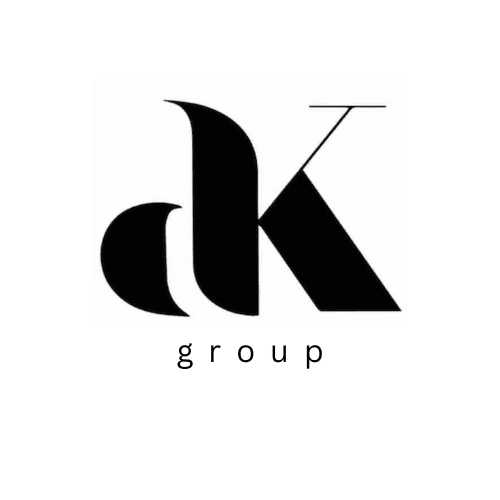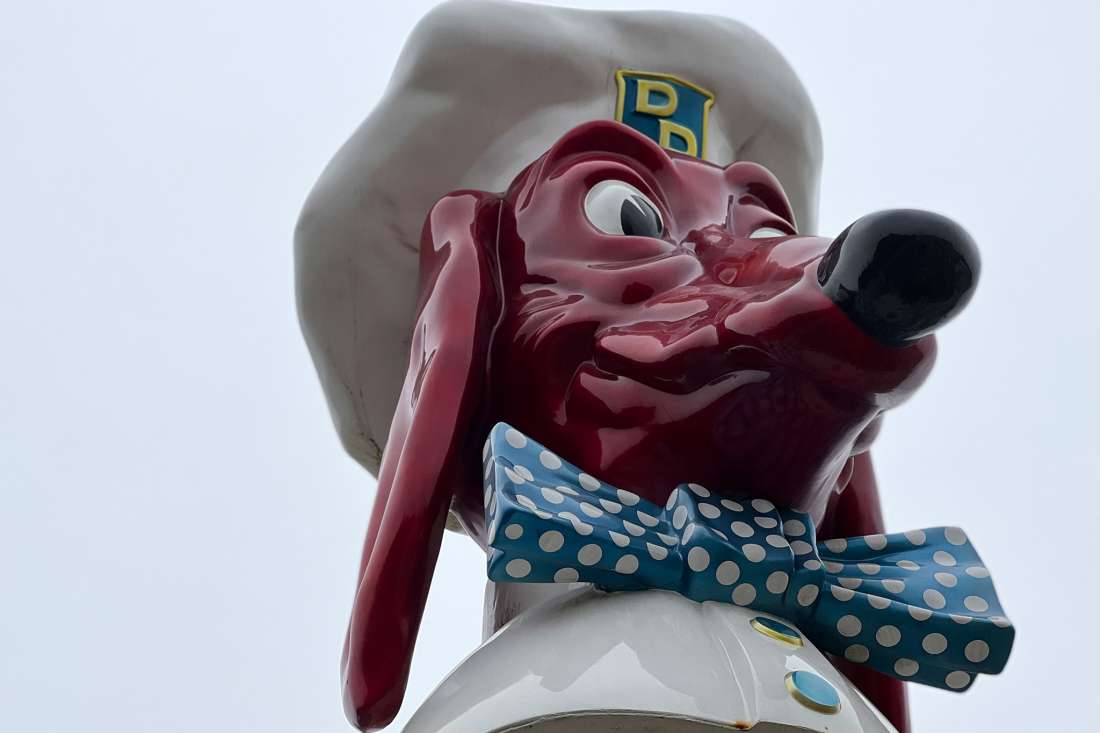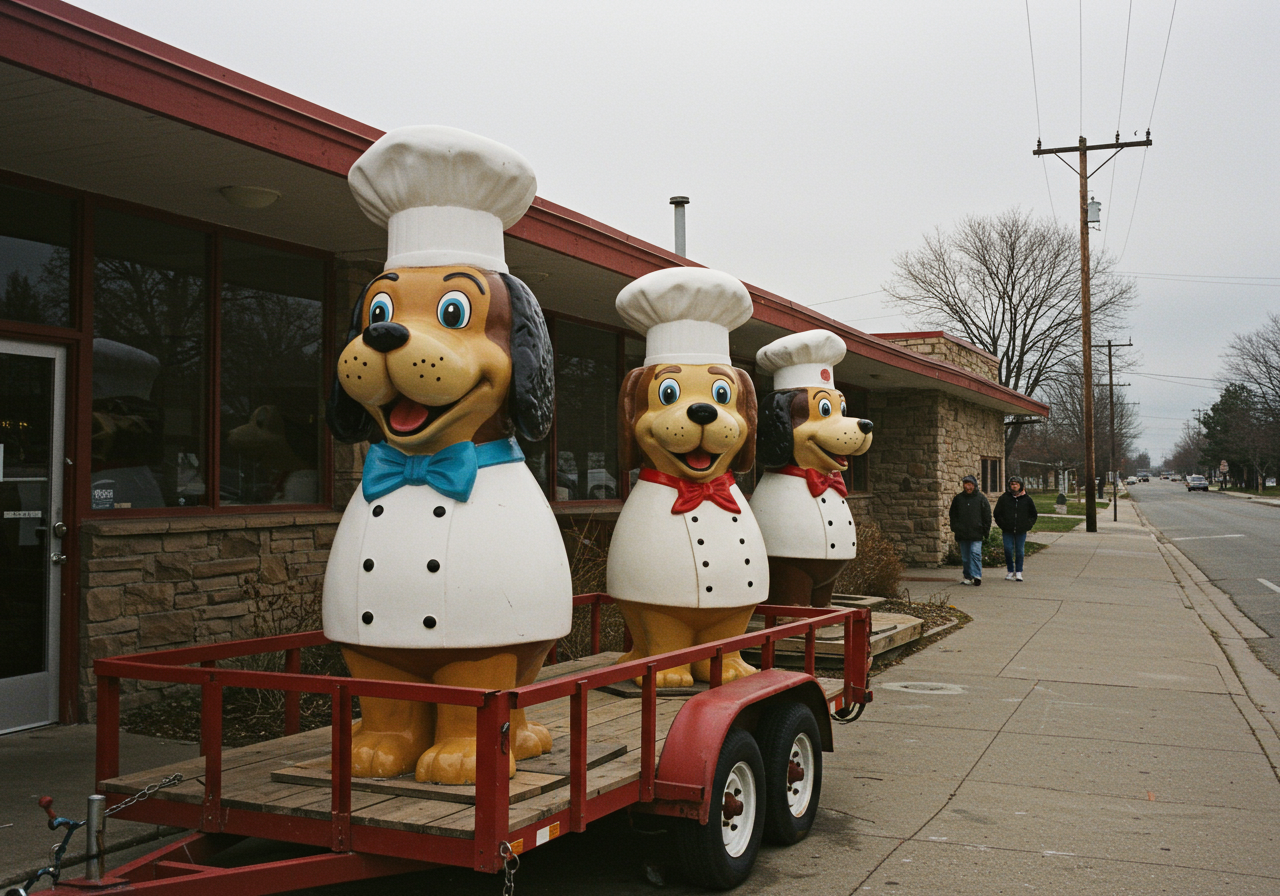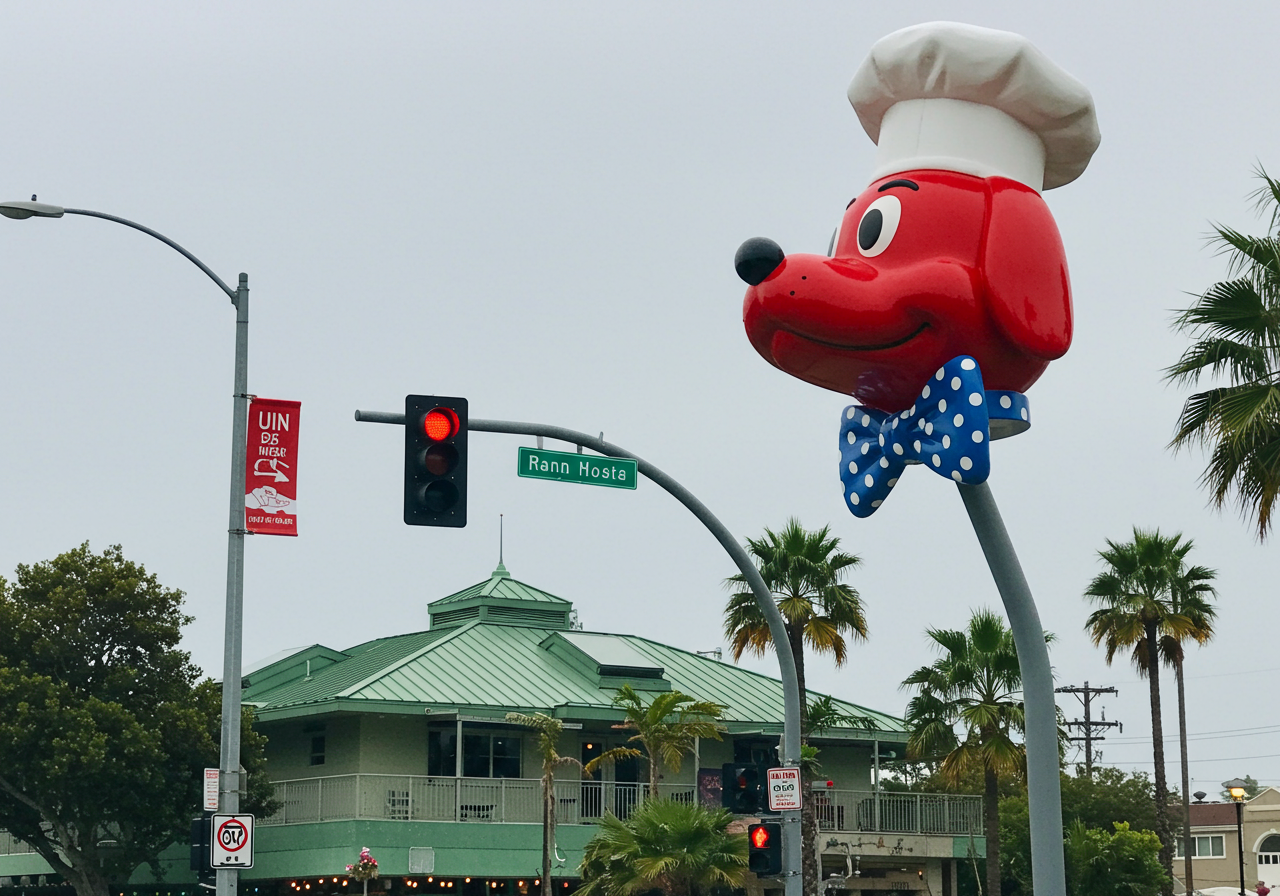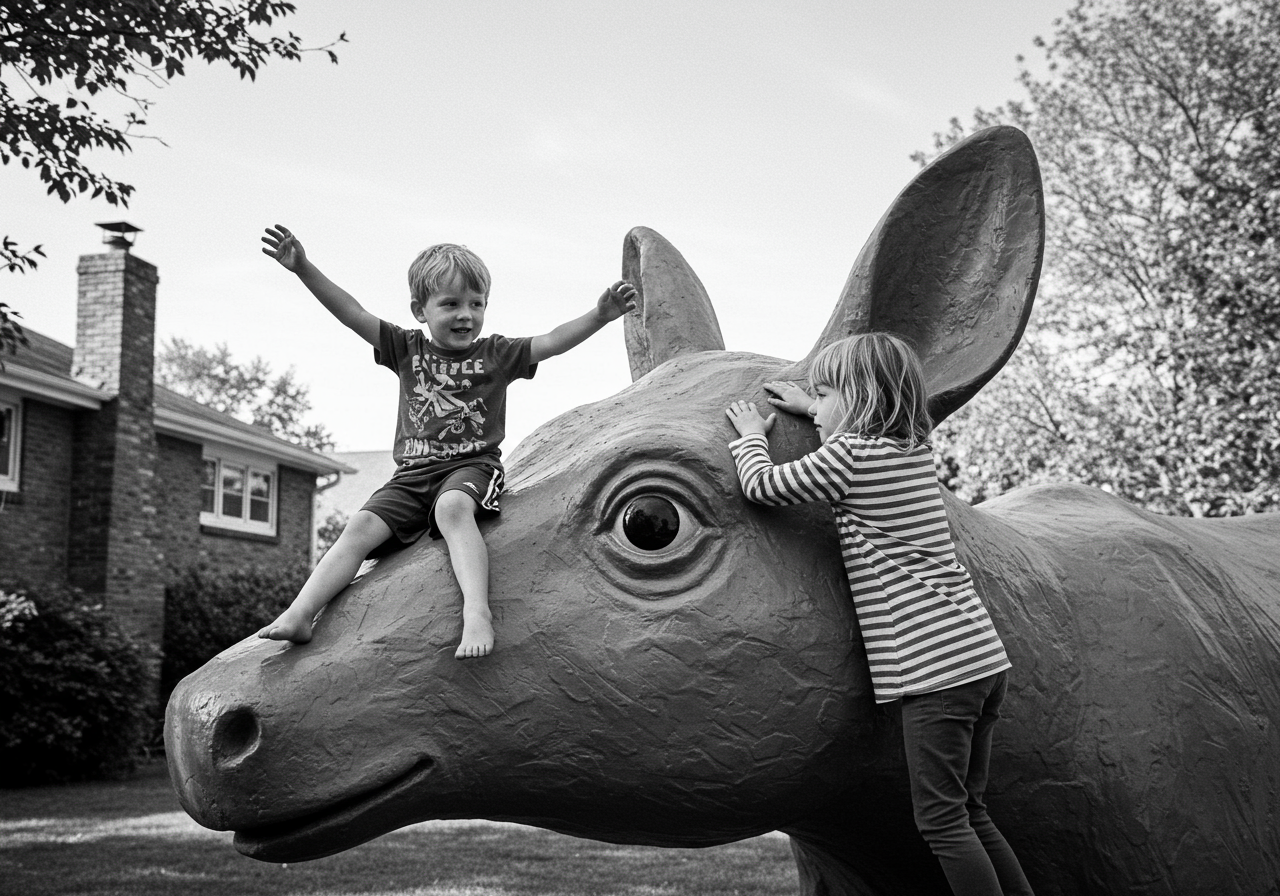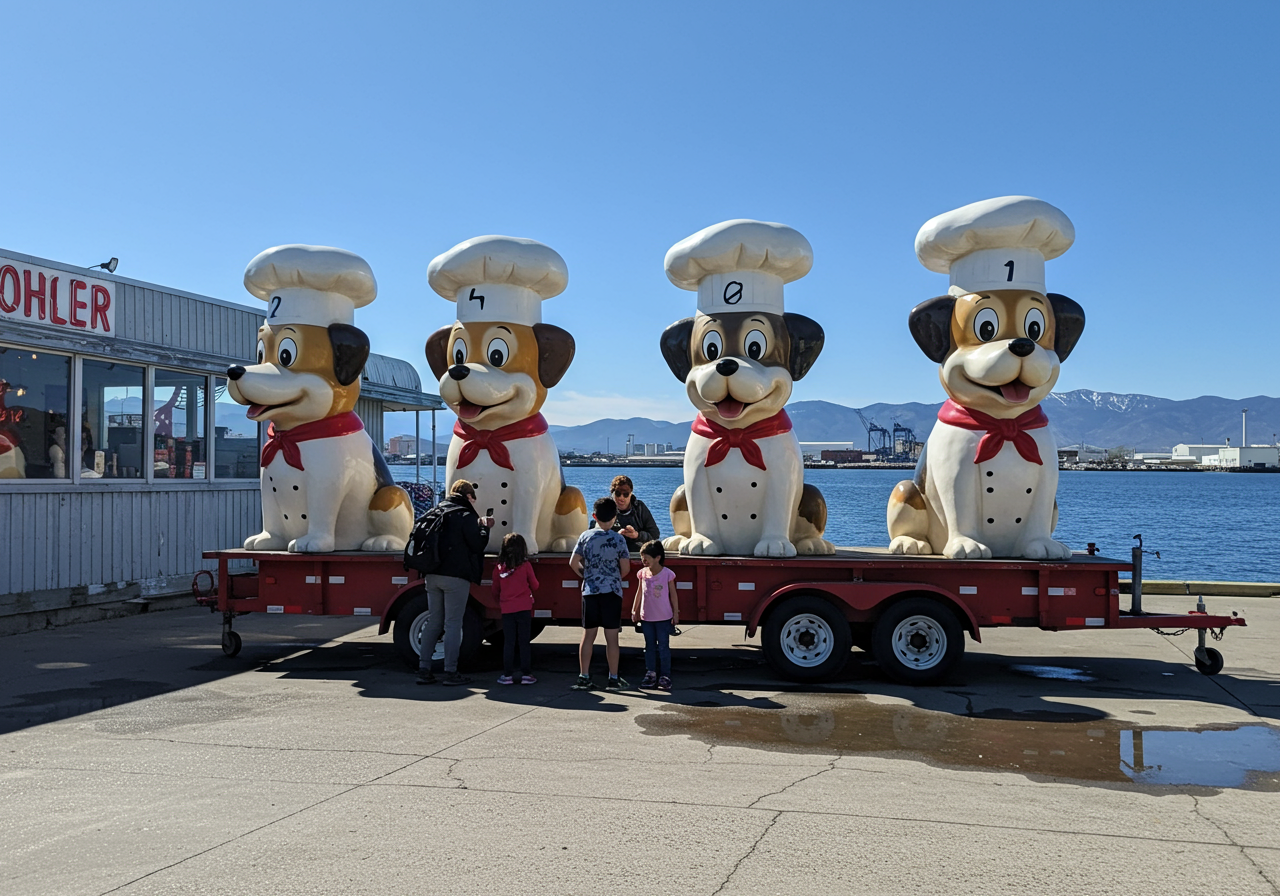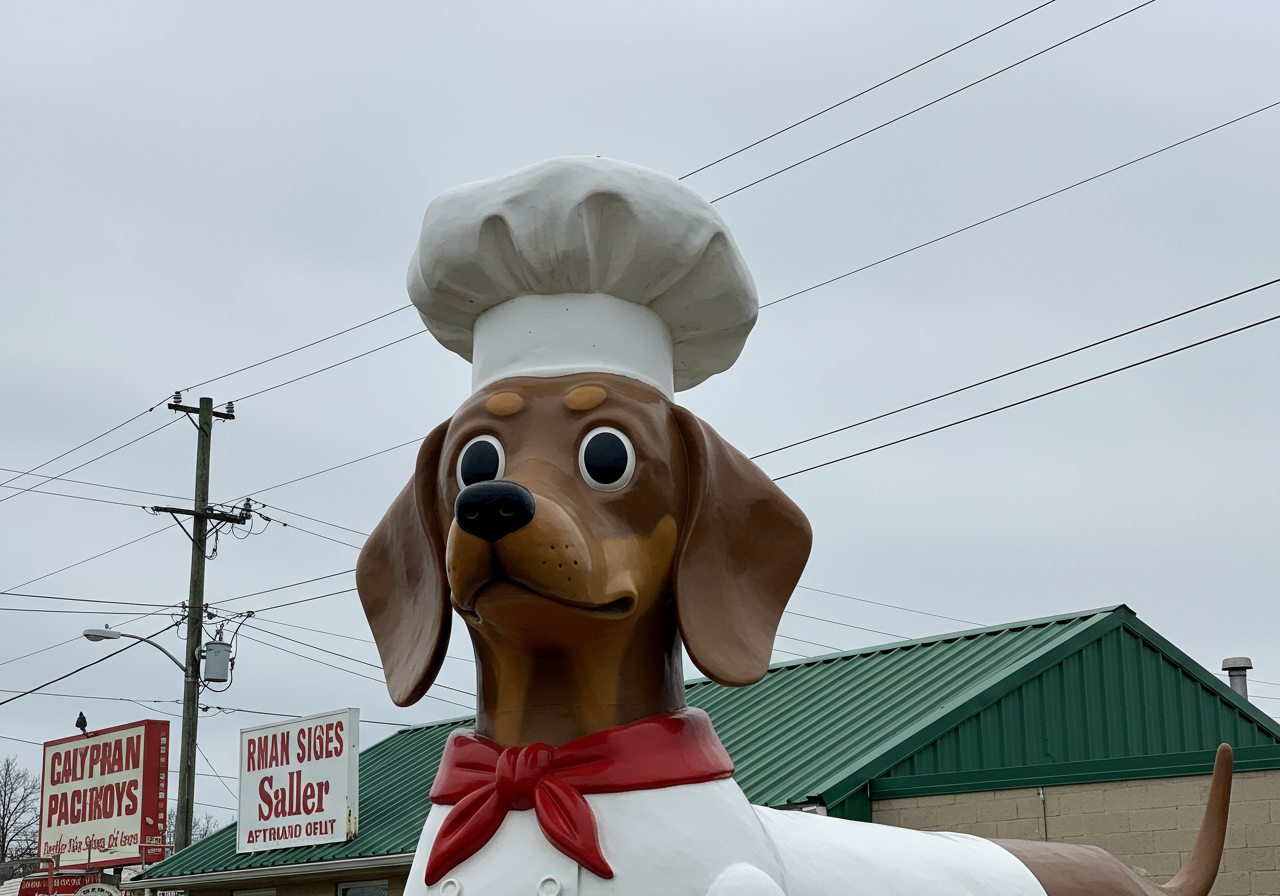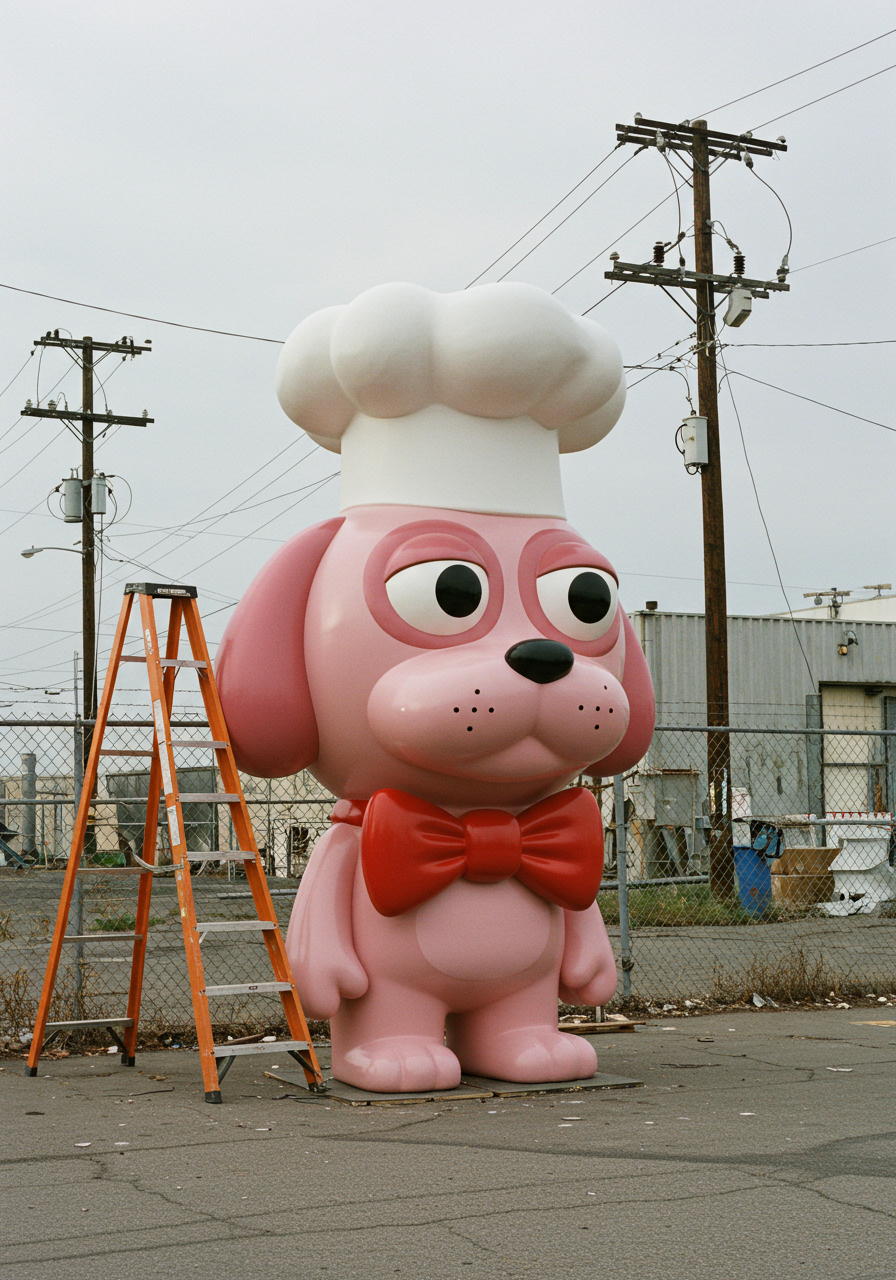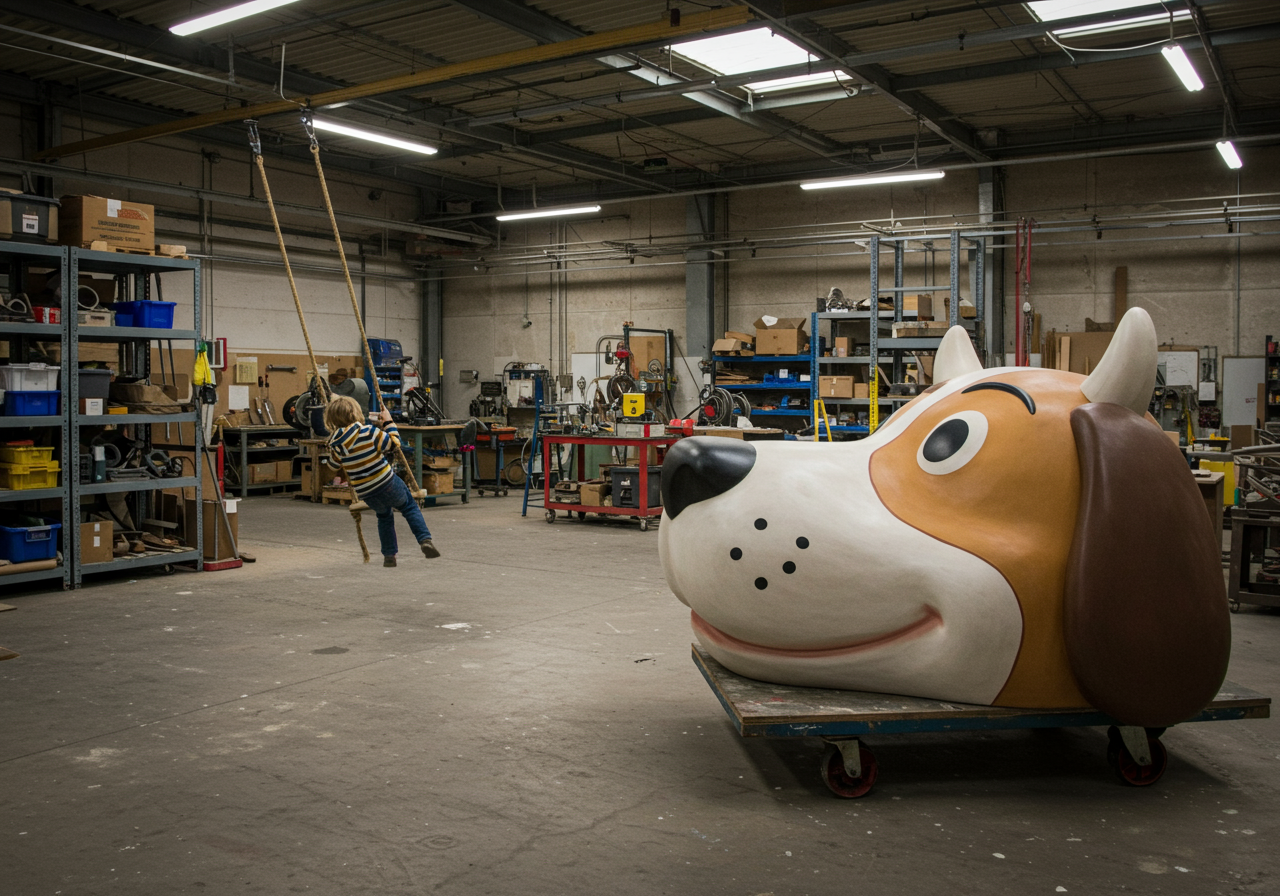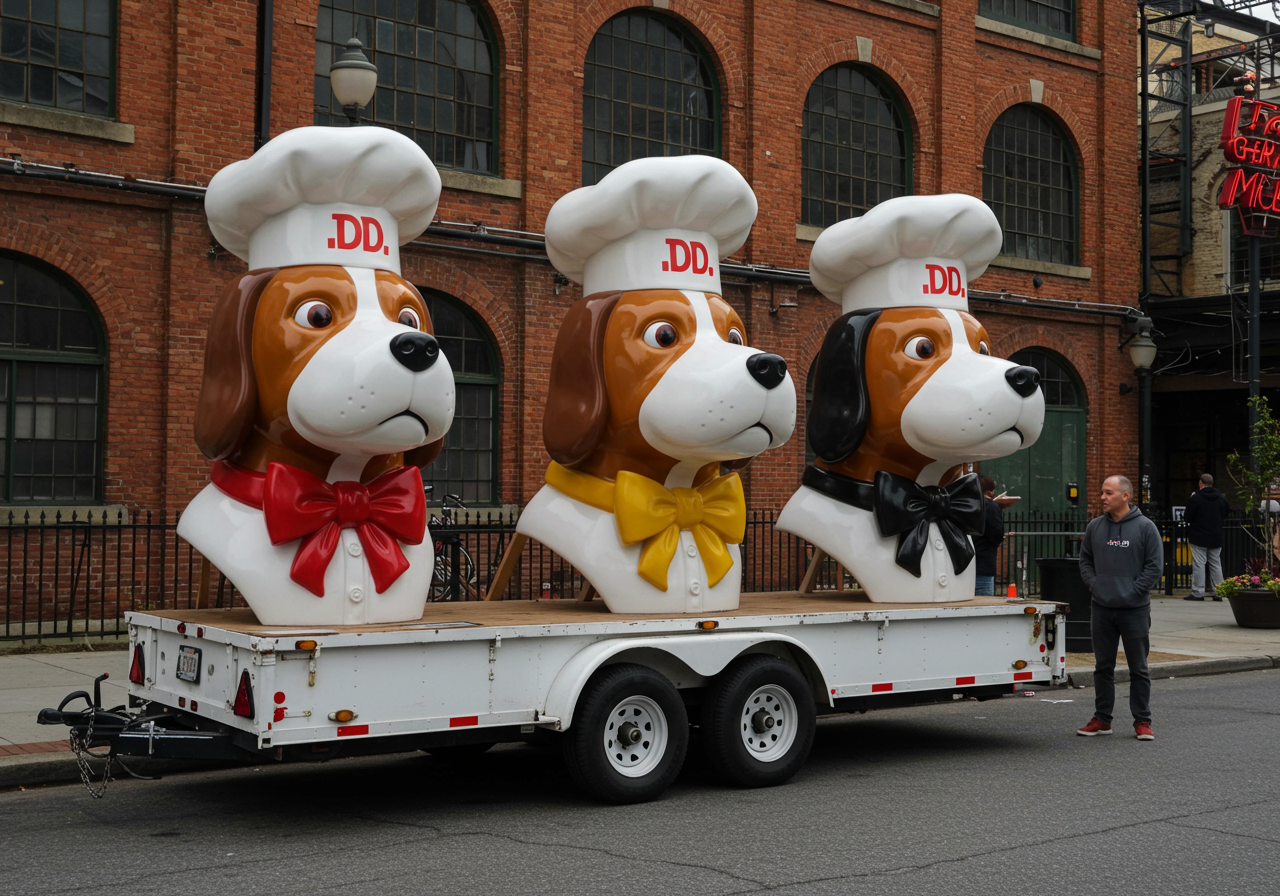John Law considers the canine sign for a moment, taking it in: The puffy white chef’s hat, the blue polka-dotted bow tie and the wide, cartoonish eyes that pierce through the mist cloaking the Outer Sunset.
“It has this enigmatic, Mona Lisa-like visage,” said Law, looking up at San Francisco’s last standing Doggie Diner head. “The eyes follow you wherever you go. It’s a little bit disturbing. You can’t tell … is this thing going to eat me? Is it happy that I’m here? And that’s appealing in a really weird way.”
The deranged dachshund was once the face of a local fast food chain operating from 1948 to 1986, when dozens of the dog heads loomed over the city to draw customers.

Law has clearly thought about this quite a bit. An artist, renowned prankster, co-founder of Burning Man and SantaCon — “Sorry about that,” he said of the latter — as well as an aficionado of vintage signs, he’s accumulated three of the dog heads himself over the years, naming them Manny, Moe and Jack after the founders of the Pep Boys.
Most days, they’re stashed on a flatbed trailer in front of the fire department on Treasure Island, where they garner anywhere between 20 to 40 visitors every day, said Law, but he’s hauled them around the city for events like the annual St. Stupid’s Day Parade, punk shows at Bottom of the Hill, fundraisers for Rocket Dog Rescue and unexpected photo-ops at the Castro Theatre and Red’s Java House. Once, he even carted the heads across the country to New York with the San Francisco Cyclecide Bike Rodeo — an exploit captured in “Head Trip,” a 2003 documentary co-directed by Flecher Fleudujon.
“I guess you could say I’m a steward of these disembodied commercial icons,” said Law. “You can’t own a cultural touchstone.”
To just about any local, the trace of regional fast food phenomena on the median between 45th Avenue and Sloat Boulevard serves as a comforting point of nostalgia, conjuring memories of childhood trips to the zoo on foggy mornings; a lighthouse-like source that helped them find their way home from school. To an out-of-state visitor or an unsuspecting tourist, it’s an odd, California Raisin-colored sculpture on the way to Ocean Beach that seemingly bears no purpose — that is, if they don’t happen to see the plaque inscription planted in the dirt beneath the head, which
On our pilgrimage to the Doggie Diner head, Law and I couldn’t find any signage denoting the origins of this retro spectacle. It wasn’t until I returned on an uncharacteristically sunny afternoon a few weeks later that I finally spotted the plaque underneath it, partially obscured by the overgrown ice plant covering the ground. Tromping over the invasive brush, I use my fingertips to lightly sweep away the fragments of leaves and sand littering the engraved, rusted letters.
was designated a city landmark in 2006 after an “only in San Francisco” saga nearly caused it to be torn down for good.
“Welcome to Ocean Beach,” they read. “This sign stood outside the last operating Doggie Diner restaurant.”
There's nothing finer
Founded by Al Ross, Doggie Diner was among one of the first fast food franchises in the Bay Area. The former amateur boxer from New York moved to Alameda with his family when he was in his early 20s and started an ice cream business with his mother called White Castle (no, not that one) before pivoting to greasy spoon fare, opening the first Doggie Diner restaurant on San Pablo Avenue in Oakland.
The famously unionized drive-in chain soon became ubiquitous, expanding to about 30 locations before 1969, when Ross sold the chain to Ogden Corporation. At the height of its popularity, Doggie Diner reportedly served nearly 6,000 pounds of french fries, hamburgers and hot dogs as well as 35,000 gallons of soda each week, according to a 1974 article in the Oakland Tribune.

“This was pre-McDonald’s, and it was a big deal,” said Jonathan Ow, 66, a retired pharmacist in San Mateo who grew up in San Francisco and worked as a junior fry cook at Doggie Diner in the summer of 1973. “It was the advent of fast food restaurants in San Francisco.”
But more famous than the Western burgers, pastrami sandwiches, chili dogs and apple turnovers were the three-dimensional signs that beckoned customers inside.
It was the era of larger-than-life roadside mascots designed to catch the eye of passing motorists. Jack in the Box opened with its trademark clown in 1951, and the McDonald’s golden arches were introduced in 1953. Glendale-based fast food chain Bob’s Big Boy rolled out its iconic statue in 1955: a boy in checkered overalls and a pompadour hairstyle hoisting up a double-decker cheeseburger.
Harold Bachman, a billboard and ad layout designer from Pittsburg, sketched the preliminary concept for the Doggie Diner head sometime in the early ’60s, choosing a dachshund to symbolize the brand after noticing “wiener dogs” were a popular item on the menu. His original design was neon, “but Ross went to a trade show and came back convinced that he wanted it in molded fiberglass laminate,” Bachman told the San Francisco Examiner in 2000. The stately bow tie was the finishing touch, and an icon was born.
The 300-pound Doggie Diner heads dominated the Bay Area skies, becoming a subject of fascination and, at times, disdain, with their oddly unsettling grins and constant presence.
“Honestly, I thought they were so grotesque,” said Chelle Lindahl, 62, who grew up in the Sunset and West Portal and now lives in Potsdam, New York. “In those days, San Francisco was much more of a low-rise city. You would see that Doggie Diner head from miles away. It was the beacon of the chili dog. It was odd, but it just kind of fit in San Francisco somehow … of course we have these giant dog heads.”
Her aunt and uncle, Cora and Santos Beloy, were the house band at the Tonga Room throughout the 1960s and 1970s, but Cora also wrote a number of advertising jingles for local businesses. One of them was a radio spot for Doggie Diner, and Cora enlisted Lindahl and her sisters, Angela and Noelle, to sing it in a recording studio downtown. At the time, Lindahl was about 7 or 8 years old.
“Doggie diner, nothin’ finer. Doggie Diner, it’s doggone good!” Lindahl crooned over the phone before breaking into laughter. “I don’t have the childlike charm, but that’s how it went. I do remember we were kind of famous among schoolmates afterward.”
Off with their heads
It wasn’t long before the Doggie Diner heads clashed with San Francisco zoning ordinances, which began prohibiting rotating signs in the mid-1960s.
Then, it was the dogs themselves that fell out of vogue. Marvin Mohn, the president of the chain at the time, insisted Doggie Diner was “upgrading, image-wise,” as “mainstream culture absorbed the hippie hatred of anything ‘plastic’ and the love of everything ‘natural.’” They were taking on a more minimalist approach, one that would apparently appeal to young professionals, as the chain faced competition from other rival restaurants that charged less, like McDonald’s, which opened its first San Francisco locations in the early 1970s.
“The cities wanted that countryside effect,” Mohn told the Oakland Tribune in 1985. He was talking about El Cerrito and Hayward, which had also proposed more stringent sign ordinances. “Whether it was a bank or an office building or a restaurant, everything went to redwood and rock and greenery.”
Arthur Asa Berger, a professor of semiology (the study of signs) at San Francisco State University, put it a different way.
“We’re in a more streamlined and blander society,” he said.
One by one, the heads disappeared. That July, Oakland’s last Doggie Diner head was dismantled as the restaurant on Fruitvale Avenue was boarded up and sold. Just three others remained in San Francisco, Emeryville and Alameda — symbols of a dying culture.
The last Doggie Diner closed in 1986.
The Doggie Diner head above the Carousel Diner in San Francisco circa 2000.
A canine comeback
It was April Fool’s Day in 2001. Law had just gotten home from San Francisco’s St. Stupid’s Day Parade and cracked open a beer when he received a phone call from a friend that was surely a joke.
The last Doggie Diner head, still mounted on a pole above what was now the Carousel restaurant on Sloat Boulevard, had toppled over in a windstorm. Its nose was smashed to pieces.
Law immediately got in the car and drove down to Ocean Beach from his Emeryville home. By the time he arrived, he saw two television camera crews and a street filled with reporters. The dog head was on its side in the middle of the pavement, where a small crowd had gathered to either cry over their fallen hero or take photos with it. And a man in a creased shirt was running around, looking incredibly distraught.
It was the late Ed Lee, the former mayor of San Francisco, who at the time was the head of the Department of Public Works.
“It must have been 40 degrees with the wind coming in from the ocean, and he was sweating,” remembered Law. “He knew he was responsible.”
The city had recently taken ownership of the last Doggie Diner head after a 2-year battle to preserve it as a landmark. The neighboring Sloat Garden Center, which owned the property at the time, wanted to raze the diner to make way for an expanded nursery and parking lot, taking down the head and donating it to a local museum.
The public was outraged. First, they’d lost Playland and Fleishhacker Pool — now this?
When the Planning Commission rejected an initial recommendation from the Historic Preservation Commission to sustain the site in late 1999, people collected thousands of signatures for petitions and held eat-in rallies at the Carousel. Cartoonist Bill Griffith, who had been including the Doggie Diner head in his Zippy the Pinhead comic strips since the early ’80s, began illustrating the saga.
Carousel owner Silver Ballesteros had kept the restaurant as close to Doggie Diner as possible, with its brown and white speckled floors, Formica counters and swiveling, leatherette stools. The original menu board was even intact, and Ballesteros said he used the same relish, buns and hot dogs. To most San Franciscans, it was still the Doggie Diner as they knew it.

The lease was terminated, but the Board of Supervisors agreed to find a new publicly accessible location within two blocks of the original home. Compromise aside, supporters began to worry as months passed and the head fell into disrepair.
“We’re impatient to have something done to preserve this local landmark,” Diana Scott of the Ocean Beach Historical Society told the Examiner. “We’re particularly concerned because the winter storms could really wreak havoc.”
Woody LaBounty, who is now the vice president of advocacy and programs at SF Heritage, said restoration efforts were underway when a violent gust of wind hit the rusted pole holding up the smirking dachshund, causing it to plummet to the empty traffic lane below, taking out a telephone booth in its descent.
“Suddenly, it all came to a decision point,” LaBounty said.
The city agreed to spend $25,000 on restoration efforts. Law, who would eventually raise double that amount in a Kickstarter campaign to refurbish the three heads in his possession, lent his first dog, Manny, to the Department of Public Works so they could properly recast the fallen dog’s nose with help from the painters union.
“It was a museum-quality restoration,” said Law. “That dog looks shiny, like a car, to this day.”
June 30, 2001, was a festive affair. An estimated crowd of 400 people gathered around the head, which was covered in a large white tarp. “Let the dog out!” they chanted as a crane operator lifted the veil to reveal the rehabilitated sign. A couple of jugglers, including LaBounty, performed for the audience. Free hot dogs were distributed. Mayor Willie Brown showed up to give a speech. Law brought his trio of dog heads to round out the ceremony — and a few real mutts were in attendance, too, yapping at their fiberglass counterparts.
“It’s hard to get a handle on it, but it’s a perfect symbol of San Francisco,” Law said of the Doggie Diner head. “How something like that could be genuinely important in a world that has so many grim outcomes. It makes someone smile for a minute on a bad day. That’s important.”
LaBounty believes the offbeat landmark is eventually going to lose its context. There’s no longer a diner, after all, and the dog is now flanked by Java Beach at the Zoo and Pasquale’s Pizzeria.
That said, the Doggie Diner name was revived for a few concession stands at Oracle Park, and one Napa resident, Kip Atchley, announced plans to attempt to revive the chain in 2019, but has so far been unsuccessful.
“The farther and farther we get [from the days of the Doggie Diner], people aren’t going to know what it is,” LaBounty said. “But I almost prefer that people come up with their own interpretation as to why a giant dachshund’s head with a chef’s hat on a pole is in San Francisco.”
As a historian and preservationist, that’s not the way he always feels.
“In this case, it’s so bizarre and surreal. I want people to put their own spin on it,” he said.
As for Law? He hopes to see all of the abandoned dogs reunited someday.
“I started a little mantra about 20 years ago that if all the existing dog heads come together in one place, world peace will break out,” he said. “I don’t know if that’s true. I hope it is.”
